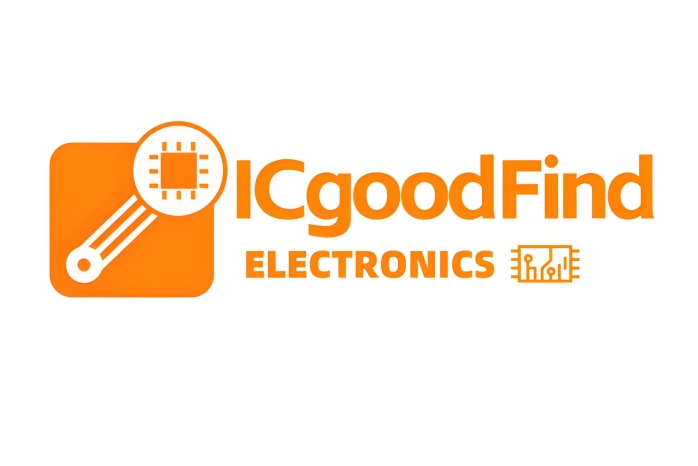**AD5241BRZ10: A Comprehensive Guide to the 10kΩ Digital Potentiometer**
In the realm of electronic design, the transition from mechanical to digital components has unlocked new levels of precision, reliability, and integration. At the forefront of this shift is the digital potentiometer (digipot), a device that emulates the function of a traditional variable resistor but is controlled digitally. The **AD5241BRZ10 from Analog Devices** stands as a quintessential example, offering a **10kΩ solution** that combines performance with versatility for a wide array of applications.
**What is the AD5241BRZ10?**
The AD5241BRZ10 is a single-channel, **256-position digital potentiometer** with a nominal end-to-end resistance of 10kΩ. It communicates via a standard **I²C-compatible serial interface**, allowing it to be easily controlled by microcontrollers, DSPs, or other digital logic circuits. This device is designed to replace mechanical potentiometers and trim pots, providing a solid-state solution that is immune to the physical wear and tear, vibration, and environmental contamination that plague their mechanical counterparts.
**Key Features and Specifications**
The AD5241BRZ10 is packed with features that make it a preferred choice for designers:
* **256 Taps:** Provides high resolution for precise adjustment of resistance, voltage, or current.
* **I²C Interface:** Supports a simple two-wire communication protocol, facilitating easy integration into digital systems.
* **Single-Supply Operation:** Works with a wide supply voltage range from **2.7V to 5.5V**, making it suitable for both 3.3V and 5V systems.
* **Zero-Level to Full-Scale Programming:** The wiper position can be set to any value between zero and the maximum resistance.
* **Non-Volatile Memory (NVRAM):** A critical feature, the **AD5241BRZ10 remembers its last wiper position** even after the power is cycled. This ensures the system powers up in a known, pre-defined state without requiring re-calibration.
* **Small Form Factor:** Housed in a compact SOIC package, it saves valuable board space.
**Internal Architecture and How It Works**
Internally, the digipot consists of a series of resistor segments connected together with analog switches. The wiper, which is the moving terminal, is connected to one of these taps through a solid-state switch. The desired wiper position is written to the device's internal register via the I²C interface. The decoded register value then closes the corresponding analog switch, effectively "moving" the wiper to the new position and setting the resistance ratio between Terminal A, the Wiper (W), and Terminal B.
**Primary Applications**
The AD5241BRZ10's ability to provide programmable resistance makes it incredibly useful in numerous circuits:
* **Programmable Voltage Dividers:** Used for setting reference voltages or biasing points.

* **Gain Control in Op-Amp Circuits:** Replacing fixed resistors to allow for **software-controlled adjustment of amplifier gain**.
* **LCD Screen Contrast Control:** A common application in portable devices.
* **Sensor Calibration and Trimming:** Providing fine, remote adjustments without manual intervention.
* **Volume Control in Audio Systems:** Offering mute and precise attenuation functions.
**Advantages Over Mechanical Potentiometers**
The benefits of using the AD5241BRZ10 are significant:
* **Enhanced Reliability:** No moving parts means a much longer operational lifespan.
* **Superior Precision:** Digital control eliminates the human error and poor resolution associated with manually adjusting a knob.
* **Remote Control and Automation:** Resistance values can be changed dynamically by software, enabling automated calibration and system reconfiguration.
* **Space Savings:** Its small IC package is far smaller than a mounted mechanical pot with the same functionality.
**Design Considerations**
While powerful, using a digipot requires attention to detail:
* **Wiper Resistance:** The wiper itself has a small inherent resistance (typically 50Ω), which can affect performance in very low-resistance applications.
* **Voltage Limitations:** The analog voltage on any terminal must remain within the supply rails (VSS to VDD).
* **Bandwidth:** The internal capacitance limits the bandwidth of signals passing through the device, making it less suitable for very high-frequency AC applications.
**Conclusion**
The **AD5241BRZ10 10kΩ digital potentiometer** is a robust, flexible, and intelligent component that modernizes circuit adjustment and control. Its combination of **non-volatile memory**, digital interface, and compact design solves numerous challenges posed by mechanical potentiators, paving the way for smarter, more adaptive, and more reliable electronic systems.
**ICGOODFIND:** The AD5241BRZ10 is an exceptional find for designers seeking a reliable, digitally-controlled 10kΩ potentiometer. Its non-volatile memory and I²C interface make it a superior drop-in replacement for mechanical pots, offering automated control and significantly improved system longevity.
**Keywords:** Digital Potentiometer, I²C Interface, Non-Volatile Memory, Programmable Resistor, Analog Control.
